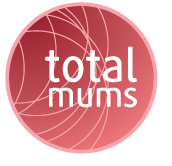Recti abdominis diastasis
During pregnancy your abdominal muscles (“6 pack”) stretch from hormonal softening to accomodate the growth of your uterus, especially during the last trimester. As this occurs the right and left side of your rectus abdominis get stretched apart and a gap forms in between. If these muscles are continually used while being stretched, a diastasis rectus abdominus can occur. This is where the two rectus abdominus bellys separate with strenuous activites (eg, going from lying into sitting). In some cases you are able to see a doming down the centre of your abdomen.
This normal occurrence will not affect all women who are pregnant. However, if you are not aware that you have it, you may exacerbate the problem by performing certain activities which can result in decreased spinal and core control, lower back pain and incontinence.
Some small rectus diastasis can resolve spontaneously, however a larger diastasis may need further intervention. It is recommended you get this checked by your midwife, obstetrician or women’s health physiotherapist.
Activities to avoid:
- Sit ups
- Using abdominals to sit up
- Heavy lifting
- Over-stretching your abdominals (lying backwards over a swiss ball)
- Any activity that causes your abdominal wall to bulge with exertion
- Straining, especially if constipated
- Prolonged standing, especially at the end of the day
What can I do to help:
- Pelvic floor exercises
- Transverse abdominus exercises
- Working Pelvic floor and Transverse abdominis together
- You may need an external support (Advised for 6 weeks postnatally)
- Use hands to help hold abdominals together with intense coughing or squeezing Correct lifting technique, using legs
- Good posture – support for back with sitting
- Rolling to your side to change positions
- Gradual return and build up to exercise
If symptoms persist please contact your women’s health physiotherapist
